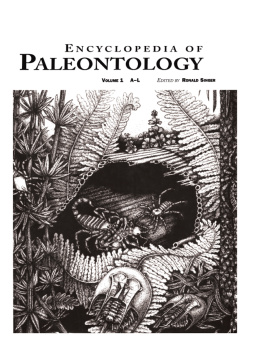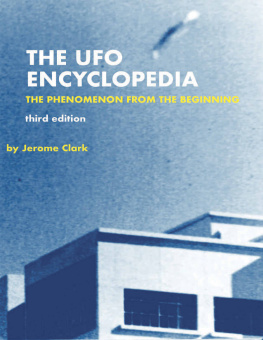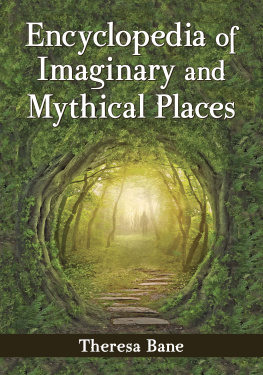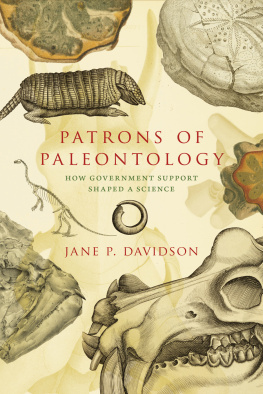Ronald Singer - Encyclopedia of Paleontology: A-L
Here you can read online Ronald Singer - Encyclopedia of Paleontology: A-L full text of the book (entire story) in english for free. Download pdf and epub, get meaning, cover and reviews about this ebook. year: 1999, publisher: Fitzroy Dearborn, genre: Romance novel. Description of the work, (preface) as well as reviews are available. Best literature library LitArk.com created for fans of good reading and offers a wide selection of genres:
Romance novel
Science fiction
Adventure
Detective
Science
History
Home and family
Prose
Art
Politics
Computer
Non-fiction
Religion
Business
Children
Humor
Choose a favorite category and find really read worthwhile books. Enjoy immersion in the world of imagination, feel the emotions of the characters or learn something new for yourself, make an fascinating discovery.
- Book:Encyclopedia of Paleontology: A-L
- Author:
- Publisher:Fitzroy Dearborn
- Genre:
- Year:1999
- Rating:4 / 5
- Favourites:Add to favourites
- Your mark:
- 80
- 1
- 2
- 3
- 4
- 5
Encyclopedia of Paleontology: A-L: summary, description and annotation
We offer to read an annotation, description, summary or preface (depends on what the author of the book "Encyclopedia of Paleontology: A-L" wrote himself). If you haven't found the necessary information about the book — write in the comments, we will try to find it.
Encyclopedia of Paleontology: A-L — read online for free the complete book (whole text) full work
Below is the text of the book, divided by pages. System saving the place of the last page read, allows you to conveniently read the book "Encyclopedia of Paleontology: A-L" online for free, without having to search again every time where you left off. Put a bookmark, and you can go to the page where you finished reading at any time.
Font size:
Interval:
Bookmark:

Encyclopedia of
Paleontology
Encyclopedia of
Paleontology
Volume 1
A - L
Editor
Ronald Singer
The R.R. Bensley Professor of Biology and Medical Sciences
University of Chicago
First published 1999 by Fitzroy Dearborn Publishers
Published 2019 by Routledge
2 Park Square, Milton Park, Abingdon, Oxon OX14 4RN
52 Vanderbilt Avenue, New York, NY 10017
Routledge is an imprint of the Taylor & Francis Group, an informa business
Copyright 1999 Taylor & Francis
All rights reserved. No part of this book may be reprinted or reproduced or utilised in any form or by any electronic, mechanical, or other means, now known or hereafter invented, including photocopying and recording, or in any information storage or retrieval system, without permission in writing from the publishers.
Notice:
Product or corporate names may be trademarks or registered trademarks, and are used only for identification and explanation without intent to infringe.
British Library and Library of Congress Cataloguing in Publication Data are available.
Interior Design and Typeset by Print Means Inc., New York, New York
Cover design by Peter Aristedes, Chicago Advertising and Design, Chicago, Illinois
Cover illustration: Reconstruction of a Pennsylvanian swamp with a diverse chelicerate fauna, illustration by Lonny Stark
ISBN 13: 978-1-884964-96-1 (hbk)
CONTENTS
People are drawn to fossils. All over the world, enthusiastic nonprofessionals soak up the latest news about remarkable fossil discoveries and often try to discover their own. The fossil halls of natural history museums are always packed with visitors. Paleontology is hot, and there is always a need for an up-to-date, accessible reference.
One factor that persuaded me to undertake this project was the concern that when many people hear the word paleontology, they conjure an immediate association with dinosaurs. This almost visceral linkage leaves out innumerable other vertebrate taxa, as well as invertebrates belonging to more than 35 phyla, the other kingdoms of lifeplants, fungi, algae, protistsand the vast array of concerns that extend beyond the identification of individual organisms. Paleontologistswho often prefer to be called paleobiologistsseek to understand the entire fabric of lost worlds. This, of course, includes the identification of species and tracing their evolutionary relationships. It also includes reconstructions of these animals basic biology, behavior, and ecology. It calls for the reconstruction of ancient climates, atmospheric and ocean chemistries, continental boundaries and positions, sea levels, and now-vanished terrains and environments.
The distant past is not simply a strangely vegetated theme park populated by extinct animals: its entire fabric is eerily unfamiliar and dimly understood. Entire ecosystems wholly alien to our experience must be rebuilt on the basis of carefully collected facts and testable theories. Windows need to be fashioned in order to observe phenomena that unfold over immense spans of time, phenomena that may otherwise escape our attention.
Today there are more than 1.5 million named and described species of plants and animals on our planet and perhaps 4 to 5 million more that have never been identified. If one makes a crude estimate that the average species lasts a million years, this would indicate that somewhere around 2.7 billion species have come and gone since the start of the Cambrian period, some 540 million years ago. The fossil record has yielded only a minute fraction of this number, and the sample is a biased one. Biases arise from the composition and size of organisms, the environment they inhabited, the collecting biases of investigators, and the accessibility of fossil-bearing rocks. Soft-bodied forms are poorly represented and are only glimpsed in widely separated windows afforded by rare Lagerstaaten (preserved-intact former environments and their inhabitants), such as the Canadian Burgess Shale. Many environments are not conducive to fossilization: forms that lived in the deep ocean and in mountainous areas are rarely preserved. Some time periods are under-represented, due to unusually low geological activity, lack of surface exposure of the sediments, or widespread alteration of the rocks by heat and pressure. Despite these and other biasing factors, the fossil record has managed to record evidence of most major taxa.
This encyclopedia attempts to cover all major groups of fossil organisms, but inevitably, some groups will be given more space than others. Extent of coverage has been tempered by space considerations, the availability of specialists to write about them, public fascination for certain groups, and my personal preferences. For example, there is one article on sponges and spongelike organisms. While sponges may not excite the average layperson, they have been important components of marine faunas since the late Precambrian. By far the most primitive of the metazoans, they may represent an independent experiment in the formation of multicellular animal life. Their morphological diversity is impressive and their importance as reef-builders cannot be overlooked.
Some practitioners of the hard sciences have mischaracterized paleontologists as bone hunters indulging a pursuit akin to stamp collecting. In fact, a practicing paleontologist requires a broader knowledge base and a greater diversity of skills than perhaps any other profession. New techniques are constantly being developed or improved in order to extract every scintilla of useful information. Today we can reliably estimate global temperatures using oxygen isotope ratios locked in the skeletons of marine microfossils. We can reconstruct the diets of extinct animals using carbon isotope ratios and trace elements stacked in bone. The techniques of molecular biology allow us to isolate the DNA from certain extinct organisms and compare it to the DNA of suspected modern relatives. New dating techniques appear with regularity and allow precise correlation and sequencing of sedimentary deposits worldwide. Systematicsthe study of evolutionary relationshipshas undergone a revolution in the last 30 years, and many unexpected connections have been found between animals as disparate as whales and cattle. Paleontology has unambiguously demonstrated that you cannot accurately reconstruct evolutionary patterns without bringing fossils into the picture. Many major evolutionary changes can only be traced through the rock record.
Paleontology is not only relevant to the past but is essential for understanding the history of life and for imagining the future we are creating for ourselves, our descendants, and our planet. Studies of paleoclimate show that the last 10,000 years have been unusually stable, which leaves open the possibility that climatic instability could return, with catastrophic consequences for modern civilizations. Past mass extinctions demonstrate how, and at what speed, the earth rebounds from devastation. By the time it runs its course, the current, human-mediated mass extinction may shape up to be as profound as the one that wiped out the dinosaurs. Just after the Cretaceous extinction, ferns became the dominant plant form and it took a few million years for a very different world to arise from the ashes of that global catastrophe. What will happen if humans do not reverse the current trends of deforestation, habitat fragmentation, and overpopulation?
While the major portion of this encyclopedia surveys the current state of knowledge, I wanted to include a little bit of the history of paleontology. This rich legacy is contained in many of the articles dealing with major taxa, the several regional profiles, and in biographies of some of the major historical figures. I have included energetic fieldworkers, individuals whose strengths lay in reconstruction and description, and scientists who revolutionized theory and analysis. In order to present complete profiles of these historical figures, it was decided that only deceased individuals would be the subjects of their own entries; the contributions of living workers in the field can be assessed through the ample citation of current scholarship in each essay.
Next pageFont size:
Interval:
Bookmark:
Similar books «Encyclopedia of Paleontology: A-L»
Look at similar books to Encyclopedia of Paleontology: A-L. We have selected literature similar in name and meaning in the hope of providing readers with more options to find new, interesting, not yet read works.
Discussion, reviews of the book Encyclopedia of Paleontology: A-L and just readers' own opinions. Leave your comments, write what you think about the work, its meaning or the main characters. Specify what exactly you liked and what you didn't like, and why you think so.













